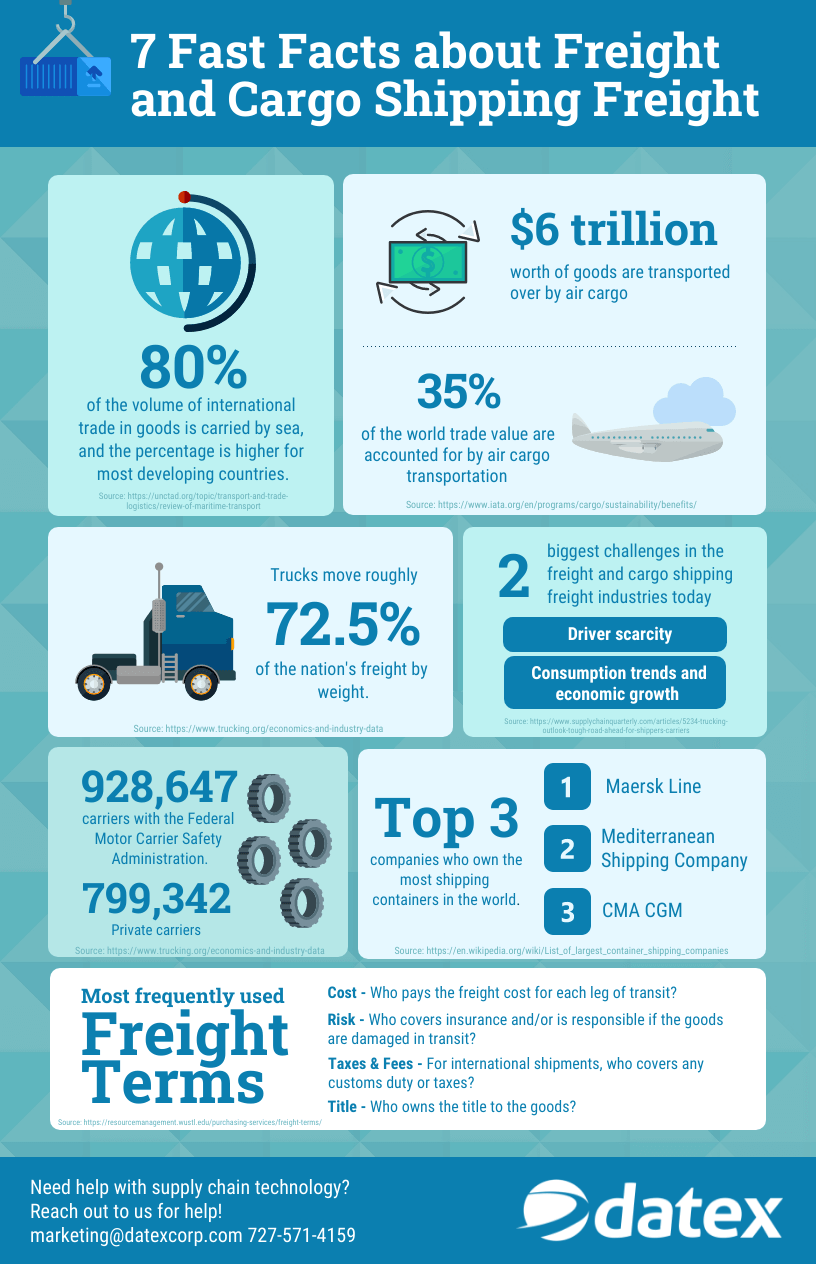So many of the world’s goods are transported over through by sea. Over 80% of goods traded internationally are carried by sea. For most developed countries, this percentage can go even higher. Over 35% of goods that are worth over $6 trillion are transported over by air cargo. Today, there are three companies that own the most shipping containers in the world. Maersk Line is ranked first with a total of 4,121,789 TEU. The Mediterranean Shipping Company comes in second place with a total TEU of 3,920,784. CMA CGM is ranked third with the most shipping container at 2,999,522 TEU.
According to the American Trucking Associations, over 72.5% of the nation’s goods are transported by trucks, carrying over 11.84 billion tons of freight. According to the U.S. Department of Transportation, there are 928,647 for-hired carriers that work with the Federal Motor Carrier Safety Administration. 799,342 for-hired carriers work with private carriers and 84,763 work with other interstate motor carriers. The most frequently used freight terms are cost, risk, taxes & fees, and title. These words are key factors to consider determining an agreement on freight contracts, conditions, and quotes.
Lastly, the two biggest challenges in the freight and cargo shipping freight industries today are driver scarcity and consumption trends and economic growth. With this global pandemic, stimulus checks and unemployment benefits are reducing the number of drivers. Even with the benefits being revoked in some states, there are still over 9 million workers who are still claiming pandemic benefits. The pandemic has caused many uncertainties about consumption trends and economic growth. Many inventories are below normal and there are still many labor and material shortages as this pandemic continues. With the nation going back in person, many companies will continue to struggle bringing order back to normal.

